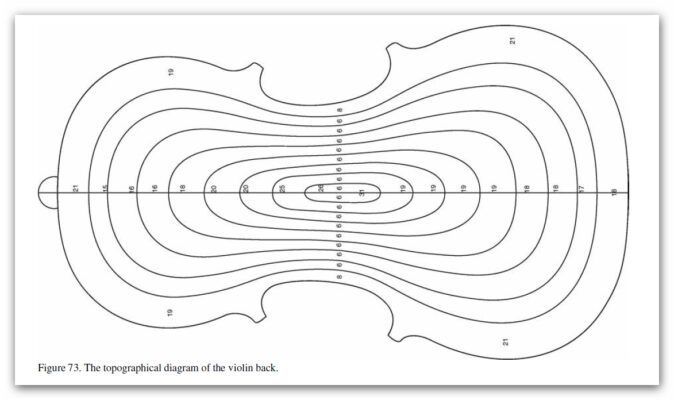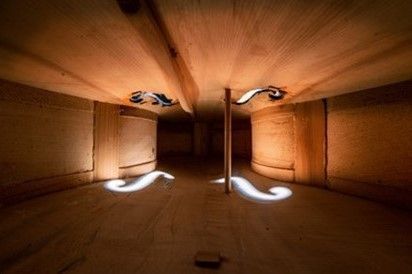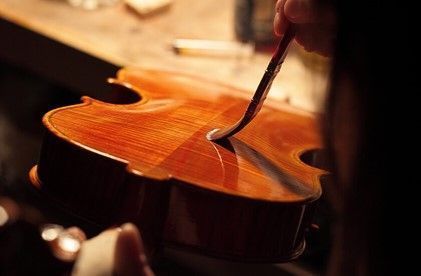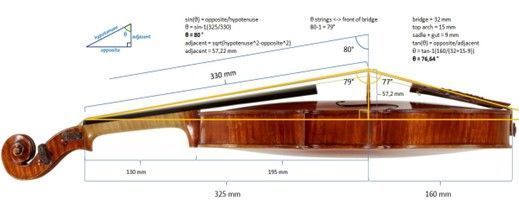Plate Graduation and Thickness
Plate graduation and thickness in violin making is a critical aspect that significantly influences the instrument’s sound quality, tonal balance, projection, and responsiveness. Here is a deeper exploration of the art of graduation and thickness in violins:

Graduation
Graduation refers to the process of carefully carving and shaping the internal plates of the violin, particularly the top (soundboard) and back, to achieve an optimal balance between strength and resonance. Graduation involves thinning the wood thickness in specific areas to allow for greater flexibility and responsiveness while maintaining structural integrity.
- Soundboard: The top of the violin is typically arched and delicately graduated. Graduating the soundboard involves skillfully thinning the wood towards the edges and reducing thickness in specific areas, such as the upper and lower bouts. This careful carving influences the soundboard’s flexibility, responsiveness, and ability to vibrate freely, contributing to the instrument’s tonal qualities and projection.
- Back: Similar to the soundboard, the back of the violin is also graduated to achieve optimal resonance and projection. The back is usually slightly arched and gradually thinned towards the edges. The thickness of the back, along with its arching and graduation, affects the instrument’s ability to produce a focused and resonant sound.
- Back: The thickness of the back plate is also crucial in determining the instrument’s tonal qualities. It is typically thicker than the soundboard to provide support and enhance tonal projection. The back’s thickness, along with its arching and graduation, affects the instrument’s responsiveness and the transmission of vibrations between the soundboard and back, contributing to the overall tonal complexity.
- Rib and Edge: The thickness of the ribs (the sides of the violin) and edges also plays a role in the instrument’s sound. The ribs provide structural support and help define the overall shape of the violin. The careful thickness selection and graduation of the ribs and edges contribute to the instrument’s resonance, tonal balance, and projection.
Thickness
The overall thickness of the violin’s plates, including the soundboard and back, plays a vital role in determining the instrument’s sound characteristics and responsiveness. The thickness is carefully adjusted to achieve the desired tonal balance, response, and projection.
- Soundboard: The soundboard thickness is carefully regulated to allow for optimal sound production. The central area of the soundboard, known as the “foot,” is generally thinner to promote greater vibration and responsiveness. Towards the edges, the thickness gradually increases to maintain structural integrity. The precise thickness variations across the soundboard influence its ability to resonate and produce a well-balanced, rich sound.
Conclusion
The art of graduation and thickness in violin making requires skill, experience, and a deep understanding of how wood properties and structural design influence sound production. Violin makers meticulously carve and adjust the thicknesses of the plates to achieve the desired tonal characteristics, responsiveness, and projection that align with their artistic vision and the preferences of musicians.
The precise balance of thicknesses, along with other factors such as wood selection, varnish, and setup, contributes to the instrument’s unique voice and individuality. The art of graduation and thickness is a vital component of the violin maker’s craftsmanship, allowing them to create instruments that produce the captivating and expressive sounds sought after by musicians.







